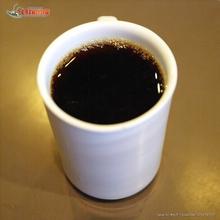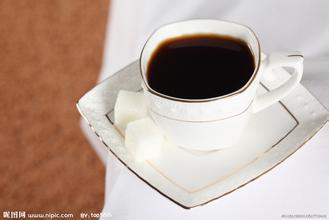Introduction to the characteristics of manor producing area with unique flavor of Indonesian civet coffee
The cat is lonely, nocturnal, alert, sensitive to hearing and smell, day and night, agile, sensitive, cunning and suspicious, so it is called fox cat. Hiding in thickets, grass, tree caves, soil caves and caves during the day, they begin to move in the morning and dusk, often foraging at the edge of the forest, near agricultural land, in valleys, or even near residential areas, and return to their habitats two or three hours later. Except for the breeding period, it is basically independent. [6] it is good at climbing trees and swimming. in order to catch prey, it often wanders into the water, but mainly on the ground. There is a fixed defecation place in the activity area, and the activity intensity can be inferred from the feces. When you encounter the enemy, you can release extremely smelly substances for self-defense. Ambush is often used when hunting, sometimes putting the body between the feet, crawling through the grass like a snake, quietly approaching the prey, suddenly rushing out to hunt in the tropics and subtropics of China. [1] including southern Gansu, Sichuan, Shaanxi Qinling, southern Anhui, Zhejiang, Fujian, Jiangxi, Hubei, Hunan, Guangdong, Hainan, Guangxi, Guizhou, Yunnan and low-altitude areas southeast of Xizang (Chayu, Bomi, Motuo, Linzhi, Milin, Cuona, etc.). [5] outside China, Indonesia, Indo-China, India (northeast), Bangladesh, Bhutan, Sikkim, Nepal, Kashmir and other regions are "smooth and taste like chocolate. and without any bitter taste." [2]
As experts in the United States, Europe and Southeast Asia have discovered the uniqueness of this coffee, there is a growing demand for civet coffee in the international market, so much so that in the Philippines and Indonesia, the two countries with the most civets, set off a gold rush to collect and process civet coffee. In the Philippines, collectors searched the ground of almost every forest, and as more and more people joined in, civet coffee had become a new industry at that time. In Indonesia, since civet coffee has been produced here for a long time, enterprising individuals have turned to catching civets and then raising them in cages in their backyard for home production.
Coffee beans that artificially feed civets have not been screened and are not beans of high quality!
Drive a bad wind
Kopi Luwak has led to a bad atmosphere. Elephant shit coffee, squirrel shit coffee and bird shit coffee have all come out. Cruel coconut cats with the same means are omnivores. In addition to eating seeds for a living, they also eat insects and snakes, birds, amphibians and reptiles, so they are really wild.
In the coffee industry, Kopi Luwak is widely regarded as a product with novelty as the selling point. "the consensus in the industry is that it tastes bad," said the American Special Coffee Association (Specialty Coffee Association of America,SCAA). SCAA quoted a coffee expert as saying: "obviously, the selling point of Kopi Luwak is its story, not its quality." Using the SCAA standard, Kopi Luwak scored two points lower than the lowest score for the other three types of coffee. It can be speculated that the processing of Kopi Luwak diluted the high-quality acidity and taste and made the taste more insipid. Of course, many people also seem to see this insipid taste as the advantage of this coffee Kopi Luwak, produced in Indonesia, one of the most expensive coffee in the world. Indonesia grows a lot of coffee crops, including wild animals called civets, omnivores, pointed mouths and dark gray fur. The favorite food is fresh coffee beans, which are fermented and digested in the body and eventually excreted by cats. Feces are grains of coffee beans and become the most expensive feces in the world. Because the quantity is very rare, so the price is very expensive. Musk cats are distributed in Indo-China, India (northeast), Bangladesh, Bhutan, Sikkim, Nepal and Kashmir, but only Sumatran civets, or Indonesian civets, are the first to introduce Kopi Luwak coffee to the United States. Mountanos (M.P. Mountanos) pointed out that when they heard about this kind of internally fermented coffee, they thought it was a joke of the industry, but did not take it seriously. Later, when I saw a special report on Kopi Luwak in National Geographic, I became interested in her. it took seven years to find a stable source of supply and began to introduce a small amount to the United States. What's the flavor of this coffee? Generally speaking, Indonesian coffee has the taste of mud and traditional Chinese medicine, and its consistency is the highest in all continents, but Kopi Luwak has a stronger taste and consistency, which is almost close to syrup, and its flavor is very special. If you don't like Indonesian coffee in the first place, you must hate Kopi Luwak even more. If you prefer the fishy smell of aged beans, you may love this alternative coffee. Experts who have tasted Kopi Luwak have put forward a polarized evaluation, and some people compare it to the best coffee in the world. Although it is the best, but willing to spend thousands of yuan to drink a cup of Kopi Luwak, that is, personal preference 1. Indonesians remove the silver-gray film on the appearance of coffee beans, rinse them with water, dry them in the sun, and stir-fry them to become cat poop coffee beans.
2. Only about 150 grams of coffee beans can be extracted from a jin of civets' feces, which will cause 20% loss in the roasting process. Due to the unique raw materials and production process, this kind of coffee can be said to be very rare. No more than 400 kilograms of coffee beans are supplied worldwide every year.
3. Traditionally, the coffee fruit is washed or sun-treated to remove the excess parts and take out the coffee beans, but Luwak obtains the coffee beans by using its natural fermentation in the civets, so it has a unique flavor.

Important Notice :
前街咖啡 FrontStreet Coffee has moved to new addredd:
FrontStreet Coffee Address: 315,Donghua East Road,GuangZhou
Tel:020 38364473
- Prev

An introduction to the characteristics of the manor producing area with a delicate fragrance of Tanzanian coffee flavor
The topography of Tanzania is high in the northwest and low in the southeast, showing a ladder shape. The eastern coast is a lowland, the western inland plateau accounts for more than half of the total inland area, and the East African Rift Valley runs from east to west from Lake Malawi to the north and south. The Kibo peak of Mount Kilimanjaro in the northeast is 5895 meters above sea level. It is the highest peak climate in Africa. The eastern coastal areas of Tanzania and part of the lowlands inland are tropical grasses.
- Next

Introduction to the characteristics of the whole soft and slightly sour Salvadoran coffee flavor manor
In 1998, El Salvador had a total population of 6.1 million (estimated), of which Indo-Europeans accounted for 89 per cent, Indians 10 per cent and whites 1 per cent. In 2012, El Salvador had a total population of 6.090646 million, of which 90 per cent were of mixed Indo-European race, 9 per cent of whites and 1 per cent of Indians aged 0 to 14, 29.7 per cent aged 15 to 64, 63.7 per cent aged 65 and above. 2013, El Salvador
Related
- Detailed explanation of Jadeite planting Land in Panamanian Jadeite Manor introduction to the grading system of Jadeite competitive bidding, Red bid, Green bid and Rose Summer
- Story of Coffee planting in Brenka region of Costa Rica Stonehenge Manor anaerobic heavy honey treatment of flavor mouth
- What's on the barrel of Blue Mountain Coffee beans?
- Can American coffee also pull flowers? How to use hot American style to pull out a good-looking pattern?
- Can you make a cold extract with coffee beans? What is the right proportion for cold-extracted coffee formula?
- Indonesian PWN Gold Mandrine Coffee Origin Features Flavor How to Chong? Mandolin coffee is American.
- A brief introduction to the flavor characteristics of Brazilian yellow bourbon coffee beans
- What is the effect of different water quality on the flavor of cold-extracted coffee? What kind of water is best for brewing coffee?
- Why do you think of Rose Summer whenever you mention Panamanian coffee?
- Introduction to the characteristics of authentic blue mountain coffee bean producing areas? What is the CIB Coffee Authority in Jamaica?

